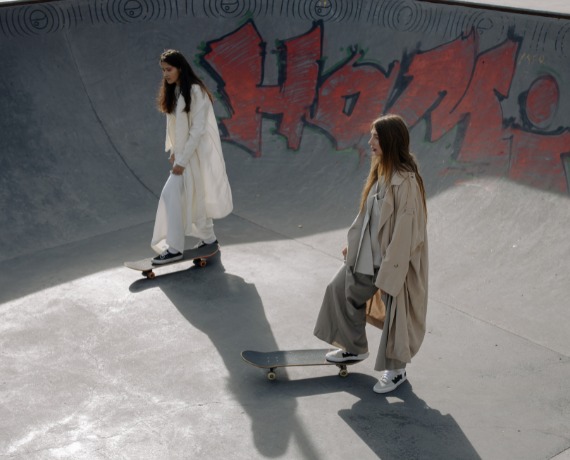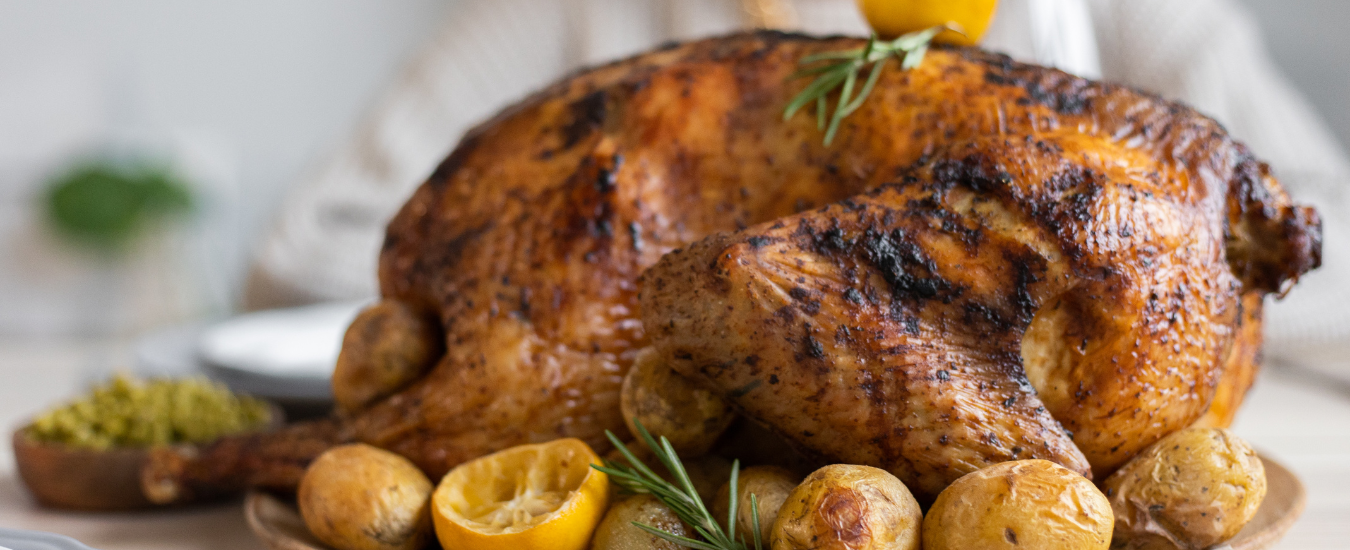The history of Halloween can be traced back over two thousand years to ancient Celtic traditions. The Celts, who lived in what is now Ireland, the United Kingdom, and parts of France, celebrated a festival known as "Samhain" (pronounced "sow-in"). Samhain marked the end of the harvest season and the beginning of the darker, colder half of the year. It fell on November 1st and was considered a significant time in the Celtic calendar.
A Time of Transition:
The Celts believed that the night before Samhain, October 31st, the boundary between the living and the dead blurred. This allowed spirits and other supernatural entities to cross into the mortal realm. As a result, Samhain was a time of both celebration and superstition. People lit bonfires and wore costumes, typically made of animal skins and heads, to ward off malevolent spirits.
The Roman Influence:
In the first century AD, the Romans conquered many Celtic territories. Their influence blended with local customs and traditions. Two Roman festivals, "Feralia" and "Pomona," influenced the development of Halloween.
Feralia was a day in late October when the Romans commemorated the passing of the dead. This festival likely influenced the concept of honoring the deceased during Samhain.
Pomona was a Roman festival that celebrated the goddess of fruit and trees. Apples were often associated with Pomona, which could explain the tradition of bobbing for apples, which became a popular Halloween activity.
The Christian Connection:
In the early Christian church, there was a desire to convert pagan traditions into Christian celebrations. In the 7th century, Pope Boniface IV declared November 1st as "All Saints` Day" (or "All Hallows` Day"), a day to honor saints and martyrs. The night before, October 31st, became "All Hallows` Eve," eventually transforming into "Halloween."
A Blend of Old and New:
Over time, Halloween continued to evolve and adapt, particularly as various cultures and traditions merged. The fusion of Celtic, Roman, and Christian influences gave rise to the Halloween we know today.
In this contemporary celebration, Halloween remains a time of superstition and celebration, with elements of the supernatural, costumes, and festivities. It`s a time when we embrace the eerie, the mysterious, and the fun while remembering the rich history and origins that underlie this beloved holiday.
Traditional Halloween activities
Traditional Halloween activities have a long and rich history, stemming from various cultural influences. These activities often blend elements of superstition, folklore, and community engagement. Here are some of the most enduring and classic Halloween activities:
Trick-or-Treating:
Trick-or-treating is the most iconic Halloween activity, especially for children. Dressed in costumes, kids go from door to door in their neighborhoods, ringing doorbells and asking for treats. The classic phrase, "Trick or treat!" is the key to receiving candy, chocolates, or other goodies from generous homeowners.
Pumpkin Carving:
Carving pumpkins into jack-o`-lanterns is a time-honored Halloween tradition. Families and friends gather to select, cut, and illuminate pumpkins with spooky faces or creative designs. The soft, flickering glow of these lanterns adds to the eerie ambiance of the holiday.
Costume Parties:
Halloween costume parties allow people of all ages to don creative and spooky outfits. These gatherings often include costume contests, music, dancing, and themed decorations. Costume parties allow adults to relive the excitement of dressing up and offer children a chance to show off their costumes.
Bobbing for Apples:
Bobbing for apples is a game with deep-rooted historical ties to Halloween. Apples are placed in a large container of water, and players, often blindfolded, attempt to grab the apples with their teeth. This simple yet entertaining game is especially popular with children.
Haunted Houses:
Visiting haunted houses or creating them at home has become a beloved Halloween activity. These attractions feature eerie decorations, spooky sounds, and live actors who aim to scare visitors. Haunted houses provide a thrilling, adrenaline-pumping experience.
Bonfires:
Building bonfires is a tradition with origins in the Celtic festival of Samhain. People gathered around these fires to ward off evil spirits and celebrate the harvest season. In modern times, community bonfires and firework displays are common Halloween activities in some regions.
Ghost Stories:
Halloween is the perfect time for telling and listening to ghost stories. Gathered around a campfire or in a dark room, people share tales of the supernatural and the unexplained. It`s a way to embrace the eerie side of the holiday.
Costume Parades:
Many communities host costume parades, particularly for children, where participants can showcase their creative outfits. These parades often lead to other Halloween festivities, such as contests and games.
Candy Trading and Sorting:
After a successful night of trick-or-treating, children often engage in the ritual of sorting and trading their candy hauls. It`s time to assess the quality and quantity of the sweets collected and deal with siblings or friends to get their favorite treats.
Halloween Decorations:
Decorating homes and yards with Halloween-themed items is a creative and popular activity. This includes hanging fake spider webs, placing skeletons and ghoulish figures, and using eerie lighting to transform the surroundings into a spooky spectacle.
Witchcraft and Divination:
Historically, Halloween was associated with various forms of divination and fortune-telling. People would engage in rituals to predict future events or discover the identity of their future spouse. While less common today, some still incorporate these practices into their Halloween celebrations.
Visiting Cemeteries:
For some, visiting cemeteries on Halloween has a certain appeal. It`s a way to connect with the eerie atmosphere of the holiday and perhaps pay respects to deceased loved ones. Some people bring flowers or candles to grave sites.
Apple Cider and Donuts:
Enjoying apple cider and donuts, often served at local orchards or festivals, is a delicious autumn tradition that many people indulge in during the Halloween season.
These traditional Halloween activities embrace the essence of the holiday, which combines elements of fun, spookiness, community, and creativity. Whether it`s trick-or-treating, pumpkin carving, or sharing ghost stories, these customs contribute to the enduring magic of Halloween.
Halloween in different cultures around the world
Halloween has deep historical roots, but its celebration and traditions have evolved differently in various cultures worldwide. While it is most strongly associated with North America, particularly the United States, Halloween`s influence has extended to many countries. Here`s a look at how Halloween is celebrated in different cultures:
United States and Canada:
In North America, Halloween is a major holiday focusing on costumes, trick-or-treating, and elaborate decorations. People of all ages, from children to adults, dress in various ensembles, collect candy door-to-door, and attend costume parties. Houses and neighborhoods are adorned with spooky decorations, pumpkins, and jack-o`-lanterns. Haunted houses and corn mazes are popular attractions.
United Kingdom and Ireland:
The United Kingdom and Ireland have rich Halloween traditions influenced by Celtic and Christian customs. In Ireland, Halloween, or "Samhain," is celebrated with bonfires, apple-bobbing games, and traditional Irish foods. The business of carving turnips or beets with spooky faces is believed to have inspired the American pumpkin carving tradition. In the UK, children go "guiding," wearing costumes and performing tricks in exchange for sweets.
Mexico – Dia de los Muertos:
Mexico celebrates Dia de los Muertos, the Day of the Dead, from October 31st to November 2nd. It is a joyful and colorful celebration that honors deceased loved ones. Families create ofrendas (altars) with photographs, favorite foods, and marigold flowers. Parades, sugar skulls, and pan de muerto (bread of the dead) are central to the festivities.
China:
While not traditionally part of Chinese culture, Halloween has gained popularity in urban areas. Large cities like Beijing and Shanghai host Halloween parties and events, and some young people enjoy dressing up in costumes.
Japan:
Halloween has been embraced by Japan in recent years, particularly by young people. Costume parties, club events, and themed decorations have become a part of the celebration. Shibuya, a district in Tokyo, is known for its lively Halloween celebrations with crowds of costumed revelers.
Australia:
Halloween`s popularity is growing in Australia, with children trick-or-treating and local businesses offering themed events. Some neighborhoods and communities host Halloween parties and decorations, though it still needs to be more widely celebrated in North America.
Germany:
Halloween celebrations in Germany include costume parties and trick-or-treating, but it`s often less prevalent than other holidays like Karneval (Carnival). Children may dress up and go door-to-door for sweets, and Halloween-themed events occur in cities like Berlin.
France:
Halloween is less deeply rooted in French culture, but it has gained popularity recently, particularly in larger cities. Children dress up and go trick-or-treating, and some businesses host Halloween-themed events.
Philippines:
In the Philippines, Halloween, often referred to as "Undas" or "Araw ng mga Patay," is a time when families visit cemeteries to honor their deceased loved ones. The holiday combines traditional Catholic practices with indigenous beliefs.
Scotland:
Halloween has deep roots in Scotland, influenced by Celtic traditions. Celebrations often involve costume parties, storytelling, and festive gatherings. "Guising," or dressing up in costume to go door-to-door for treats, is a popular tradition.
Sweden:
Halloween is not traditionally a Swedish holiday, but it has gained some recognition and popularity. Some children dress up in costumes and participate in activities, and stores may offer Halloween-themed merchandise.
Brazil:
In Brazil, Halloween is not a traditional holiday, but it is becoming more popular, especially in urban areas. Costume parties and themed events are common, and children may engage in trick-or-treating.
It`s important to note that the level of Halloween celebration and the specific traditions vary widely within each country and even from region to region. While Halloween has a strong presence in some cultures, it remains a more subdued or emerging holiday in others. As the world becomes more interconnected, Halloween`s global influence continues to evolve, bringing a rich tapestry of customs and celebrations.
the world of Halloween décor
Delving into the world of Halloween decor is a journey through eerie, spooky, and creative expressions of the holiday. Halloween decorations are designed to transform homes, yards, and even entire neighborhoods into supernatural realms. Here`s a look at the diverse and imaginative elements that make up Halloween decor:
Jack-o`-Lanterns:
Perhaps the most iconic Halloween decoration, carved pumpkins with spooky or whimsical faces light up the night. These "jack-o`-lanterns" can be found on doorsteps, windowsills, and front yards. The flickering candle inside adds an atmospheric glow.
Spider Webs and Spiders:
Fake spider webs, sometimes adorned with plastic spiders, cover bushes, fences, and trees. They create an eerie, abandoned look and add a sense of mystery to the surroundings.
Ghosts and Ghouls:
Decorative ghosts, ghouls, and skeletons are common additions to Halloween decor. These figures can be suspended from trees, eaves, and porches, creating a spooky spectacle that sways in the wind.
Cobwebs and Dusty Decor:
To achieve a haunted house look, cobwebs, dust, and aged, weathered decor items like candelabras and mirrors are used. These elements evoke a sense of abandonment and neglect.
Witch`s Cauldrons:
Cauldrons, often accompanied by broomsticks, potions, and witch hats, symbolize the brewing of spells and are frequently incorporated into Halloween decor.
Graveyard Scenes:
Front yards are often transformed into makeshift graveyards. Decorative tombstones, crosses, and even skeletal hands emerging from the ground add a chilling cemetery atmosphere.
Lanterns and Candles:
Electric or battery-operated lanterns and candles are used to create an eerie ambiance. Placed on windowsills, porches, or walkways, they cast an otherworldly glow and set a mysterious mood.
Hanging Decorations:
Decorative elements like bats, ghosts, and skeletons are suspended from tree branches or porch ceilings. When they sway in the wind, they create an eerie effect.
Haunted House Props:
Homeowners who go all out may set up elaborate haunted house displays in their garages or backyards. These may include animatronic figures, sound effects, and themed rooms for visitors to explore.
Pumpkin Patch Displays:
Some homeowners create Halloween decor inspired by a pumpkin patch. This can include straw bales, scarecrows, and pumpkins of various sizes, both real and decorative.
Window Silhouettes:
Silhouettes of spooky figures, such as witches on broomsticks, werewolves, and black cats, are often placed in windows to create a shadowy presence.
Skeletons at Work:
Skeletons are put to work in various roles in Halloween decor. They may be seen mowing the lawn, raking leaves, or lounging in a hammock, adding a humorous twist to the eerie theme.
Illuminated Pathways:
To guide trick-or-treaters and party guests, homeowners may line walkways with Halloween-themed lights, lanterns, or luminaries. These not only provide safety but also enhance the spooky atmosphere.
Fog Machines:
Fog machines create an eerie mist that blankets the ground, further enhancing the atmosphere. It`s a popular addition to haunted house displays.
Halloween Inflatables:
Inflatable decorations have become increasingly popular. These can include towering monsters, giant spiders, or even entire scenes like a pirate ship with a skeleton crew.
Themed Yard Displays:
Some homeowners create elaborate scenes with a specific theme, such as a mad scientist`s lab, a witch`s potion-making corner, or a zombie apocalypse. These displays can be highly detailed and interactive.
Colorful Lights and Projectors:
Multicolored or themed light displays, such as purple and orange, enhance the festive and spooky atmosphere. Projectors can create moving images on the sides of houses, adding dynamic visuals to the decor.
Halloween Door Decor:
Door decorations, including themed wreaths, door covers, and doormats, help set the tone for visitors before entering the home.
Front Porch Displays:
Front porches are often decorated with lanterns, eerie signs, seasonal foliage like cornstalks and hay bales, and scarecrow figures.
Indoor Decor:
Halloween decor extends indoors with spiderweb tablecloths, themed dishes, eerie centerpieces, and wall decals. Homes are often adorned with Halloween-themed art and collectibles. Halloween decor is an opportunity for creativity and self-expression, allowing homeowners to transform their spaces into a spooky and enchanting wonderland. Whether it`s a subtle touch or a full-blown haunted house, these elements contribute to the unique charm of Halloween.
In conclusion, Halloween is rich in history, tradition, and creativity. It`s a time when people of all ages celebrate the supernatural, the mysterious, and the imaginative. From its ancient Celtic roots to its modern global presence, Halloween has evolved into a multi-faceted celebration that transcends cultural boundaries.
Halloween decorations and costumes play a central role in this celebration, allowing individuals and communities to transform their surroundings and themselves. The symbolism of Halloween elements, from jack-o`-lanterns to witches and monsters, adds depth to the holiday`s ambiance, infusing it with a sense of the eerie and the enigmatic.
The diversity of Halloween celebrations around the world showcases the adaptability and universal appeal of the holiday. While it may have origins in specific cultures, it has evolved to be a global phenomenon, embracing various customs and traditions while continuing to grow in the digital age.
In the end, Halloween is when people can indulge in a little playful spookiness, express their creativity, and immerse themselves in a fantasy world. It`s a holiday that encourages community, laughter, and the thrill of the unknown. Whether carving pumpkins, donning a costume, or simply enjoying the decorations, Halloween invites us all to embrace the magic of the season and the enduring spirit of fun and adventure.




